‘The Language of Forgetting: A Short History of the Word’ by Bill Cope
Now, the plane goes to Groote Eylandt three times a week. When my uncle, an Anglican minister, first visited Groote thirty years ago, he had to stay two weeks. That’s how long it used to be until the next flight out.
‘Observe the fasten seat belts sign … tray tables. Flight attendants … ready for landing … Welcome to Groote Eylandt … We hope you … Thank you for flying with us … again next time.’
The words are predictable and forgettable. English words repeated in exactly the same way from one stop to the next, read from the airline’s script of customer-friendly and insistently practical corporate words. The words are forgettable because they are so predictable. They are written down anticipating forgetfulness. They are repeated for people who are not really listening.
The missionaries are now all but gone from Groote. The Anglican minister is an Aboriginal man, and, except when there are funerals, only a handful of people go to church. A linguist is still translating the Bible into Anindilyakwa and a couple of other whites are working with the Church Missionary Society on things like substance abuse …
*
Whites have been here working on words for decades. First it was the word of God.
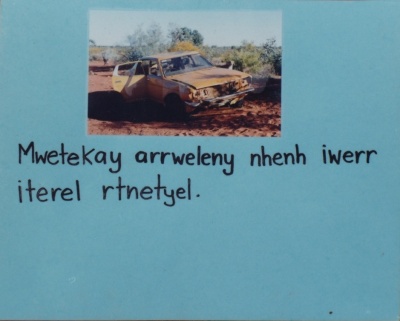
Even before this time, the moral mission to minister to the Aborigines had been on the fringe of the Church of England’s institutional conscience. First it was a matter of smoothing the pillow of a dying race, of showing compassion for the vanquished, of bringing the word of the Lord Jesus to ease the souls of a people dispossessed.
'We have developed the country, but we have certainly done very little to preach the Gospel to the people we have dispossessed. In the course of a generation or two, at the most, the last blackfellow will have turned his face to warm mother earth … Missionary work then may be only smoothing the pillow of a dying race, but I think if the Lord Jesus came to Australia he would be moved with great compassion for these poor outcasts, lying by the wayside, robbed of their land, wounded by the lust and passion of a stronger race and dying—yes, dying like rotten sheep—with no man to care for their bodies or souls.'
These were the words the Bishop of North Queensland used when he put his plea to the Church of England Congress of 1906.
The Roper River Mission began its work of spreading the word in 1908, followed by missions on Groote Eylandt in 1921 and at Oenpelli in 1925. These were the Anglicans first missions in Arnhem Land. Others were established too, across Arnhem Land and beyond— Presbyterian, Lutheran, Catholic, Methodist, Baptist, each with its own ethnic variation on the missionary theme. Between about the 1880s and the 1930s, most of the Australian continent, the parts where Aboriginal people had still been living relatively undisturbed lives until the missionaries came along, was carved up into a an archipelago of ethno-moral fiefdoms. This wasn’t so unlike the colonial carve-up of the world in the nineteenth century, at the end of which a place like Africa resembled only an imperialist patchwork, each putative country representing quirkily different ethnic variations on the same story, with a single historical moral: civilisation through progress and development. In Australia, Aboriginal countries were replaced by missionary countries and the imperialist moral was the same.
Dick Harris came to Groote in 1943 to set up a new mission at Angurugu. Over the years, in the spirit of many a white pioneer, he led the building of a mission settlement with a church, a school and a dormitory for the girls. The girls were locked up each night to protect them from moral danger, the consequences of promised marriages and evils of polygamy. For at least fifty years, the dormitory system had been a frequent feature of Aboriginal missions.
'And to godliness, brotherly kindness; and to brotherly kindness, charity.' (II Peter 1.7)
But it turned out that the word alone was not enough. It needed to be enforced by lock and key. The lock and key were a consequence of the word. They were how people would be helped to forget the culture of the past. By 1943, the dormitory system was controversial and needed to be defended. This was when Dick Harris wrote to Sydney, to the Reverend W. J. Ferrier, Secretary of the Aborigines Committee of the Church of England.
'May I also say that I believe the most important element in dealing with the native is the character and perhaps the experience of the missionary. I think, if II Peter 1.7 is made part of one’s life, the native can hardly think of the dormitory system or any other effort made for his best good as an "open declaration of mistrust of the native".'
Open declaration of mistrust. These words of accusation, levelled at his approach to the bringing of the word, must have made Dick Harris feel uneasy, and this unease called him to invoke the words of his God.
'I personally am quite happy that he should think of it as a declaration of distrust in his present mode of life. I would emphasise the word "brotherly" in the text quoted and I think of charity as "the love that God has toward us". I may not understand the subject anthropologically but if I understand my calling aright, one phase of it is "to keep men from sin".'
There was inherent virtue, it seems, to monogamy and modernity. Harris made no bones about what he was offering the natives who were the object of his brotherly love. He told the word straight.
Wherever the Gospel has been preached throughout the world, women have gained their freedom, and if we are allowed to continue here, your women will gain their freedom too. If you do not like that, you had better tell us to go away.
This was the theme of one of his sermons.
*
Anthropological understanding aside, this was the point at which the word of God, met the secular word of 'assimilation'. This was a word coined by anthropologist A. P. Elkin in the 1930s. By the 1950s, assimilation had become official government policy. Assimilation was the secular coming of the word of modernity.
The Australian Native has, through the centuries, developed as a nomad, producing nothing, storing nothing, and relying for his survival upon Nature completely unchanged. At every point, therefore, his evolution has been under influences, the direct antithesis of those which have evolved the civilization into which it is now hoped to admit him … . If assimilation is to be successful, it will be necessary first to remould his character in harmony with the new social structure. To this end, he must be subjected to influences and stimuli which have evolved our own race.
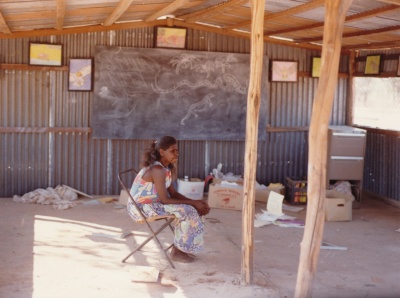
Disturbances at Angurugu turned into violence in 1957-58. The Chief Welfare Officer of the Northern Territory, E. C. Evans, and Patrol Officer, E. J. Egan, were called in to investigate the causes of the trouble. ‘The main reason … is that the people are not convinced Christians … I consider that a serious mistake was made in not educating the people to the stage where they are ready for monogamy before actually insisting on its implementation,’ said Egan in his report.
The point of contention was not the principle of forgetting but the technology of forgetting. How could people best be made to forget? Was it not better to educate them to forget? These were subtle points in the whites’ conversation about assimilation and the future of the Aborigines.
Yet there did seem to be a degree of acceptance of Christian principles among the people at Angurugu. Egan reported that all the women were adamant that they wanted monogamy. All the single men were equally adamant. From what the whites thought they were seeing and hearing, it looked as if some of the natives wanted to forget. The old men, however, were hard to find. These must not have been things they felt they needed to talk to white people about.
Egan did also note ‘the, antagonistic attitude of the Natives towards the missionaries, the equal of which I have not seen on the few missions that I have visited … The “forbidden fruit” atmosphere of the girls living in the dormitory may be the cause for a feeling of hostility on the part of the men on the Mission.’
What was required in Angurugu, Egan said,
'... was a more concentrated effort to Christianise the people. They must be educated in Christian doctrines before they are required to be subject to those doctrines. I firmly believe that, provided there is sensible co-operation between the missionaries and the natives, together with a concentration on the Christian teachings regarding marriage, there will be no great difficulty in gaining the complete acceptance of monogamy by the native people.'
*
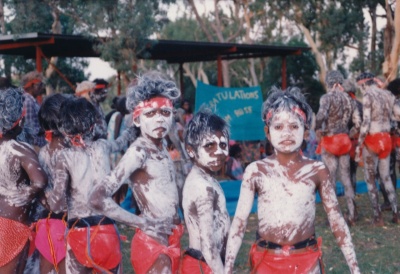
Trucks the size of small apartment blocks take 150 tons of ore at a time to the concentrator plant. The mine can be heard rumbling at night; everything is covered in charcoal grey manganese dust. It’s not dangerous to humans, they say.
These sorts of places are called communities right across the continent of Aboriginal Australia. Mostly they are ugly, architecturally disjointed places, generating a sense of discomfort that is peculiar to the more carelessly built spaces of modernity. But here the unease is even more acute. Community is a euphemism for a place that can no longer be called a mission.
From the plane, you can tell that Groote, the island itself, is a paradise on earth, a place of beaches and bays and rocky headlands. It is the sort of destination that would-be tourists shut up in air-conditioned offices in some metropolis or other might dream about, if only there were a colour photo in some tourist brochure to prompt such dreaming. But there isn’t one. You can’t visit this place, unless you have something to do with the mine, or if you are on community business and have a permit.
‘Community’ is the whites’ word, a word which gives the impression that the place is at least the sum of its people and maybe more, that there is some sort of local and spontaneous relationship between the people and the settlement: the houses, the school, the medical centre, the council. The word ‘mission’ is actually still closer to the truth because the people are only living together at this particular spot by reason of the missionary history.
The missionaries chose this place, Angurugu, because it was away from the beach and the sea and the places where the people had liked to live and considered significant. This was a place away from distractions, away from reminders of the past, and forgetting was a necessity if they were to become focused on God and work. The institutions represented by today’s buildings are sovereign white institutions, not mission buildings, different ones. Though the new technology of the word won’t allow for such a simple admission.
The plane lets off the miners, who all live by the sea at Alyangula, about ten or fifteen kilometres away from Angurugu. The mine’s remoteness belies its moral position at the heart of white modernity, producing manganese, a key resource for steel making. It’s been two hours by jet from Darwin, and it’s more than that if you’re flying on to the next substantial airport in Cairns. The others getting off the plane must be people with permits, doing Aboriginal community business. Like I am.
One quarter of the world’s manganese is mined on Groote Eylandt. By my calculations—and the modernity of us whites is one in which numbers are the measure of most things—this adds up to one quarter of the Volvos and one quarter of the Toyotas, one quarter of the New York skyscrapers and one quarter of the Sydney skyscrapers, one quarter of the fridges in Buenos Aires and one quarter of the fridges in Johannesburg.
One of the strange things about modernity is that you never know whose land has been dug up to make these things, to know whose land it is you are touching or to know the identity of the tangible object other than its surface visibility, to know which quarters end up in which cars, which skyscrapers or which fridges. The numbers seem to matter, but they are meaningless. But as you stand and hear the rumble of the mine, the numbers can at least provide an inkling of material truth, that Groote is a place in the very centre of the great global commodity system.
A GEMCO publicity brochure explains that ‘the ore was deposited over a gently sloping basement in shallow sea water during a period of rising and falling sea levels. This deposition occurred during the “Cretaceous” period some 95 million years ago.’ 6 These are things we believe as unknowingly, with as little tangible experience to back them up, as the quarters in the world’s steel.
*
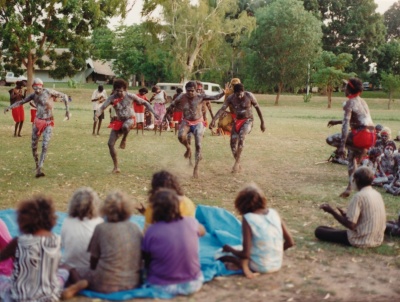
When the mine began, the community was asked how it wanted the land rehabilitated: market gardens, fields for cattle, forests that could be harvested for timber? After all, it seemed there that there might be some residual advantage in having had the land cleared. White people have made a virtue of cleared land for centuries.
No, the people of Groote said. None of this was any use to them, they wanted the land put back the way it had been.
‘The mission having held the original rights, we were able, after some hard bargaining, to ensure that considerable compensation will come to the island people once mining actually starts.’ This is what was written in the official CMS records. Mining started in 1966.
*
I’m here on a project examining the English language and literacy in the development of workplace and training competencies. ‘Competency’ is one of those neologisms that come and go, as white bureaucratic systems slide from euphemism to euphemism.
Simply, each practical work or life skill needs to be learnt or sufficiently well learnt to be demonstrable in practice. How well it has been learnt needs to be observed and assessed. Competencies, and the training involved and the assessment of competency, are raw materials of training modules—bounded, clear, definable pieces in a skills construction that can be assembled neat little piece by neat little piece. Each module, each skill, is made up of units and elements whose scope is clearly delineated, no less and no more for each skill. In competency systems there are clear prerequisites, stating what you need to have done first, clear lines of articulation indicating how training modules interrelate, a whole lot of words of structure and utility, an engineered edifice of individual development, whose purpose, whose end, is the whole worker, the multiskilled worker.
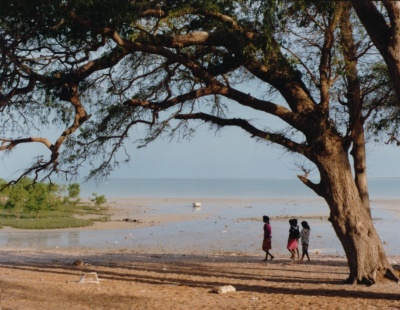
‘Things are turning around now because there is new management at the mine. There’s Mabo and they want to extend the mining lease, so the directive has come down from Melbourne: hire same blackfellas,’ says a white trainer in the community. ‘Mabo’ was an Australian High Court Decision of 1992 which for the first time acknowledged Aboriginal land ownership rights.
So here am I doing community business, competency business, where a previous generation of whites, my people, had done missionary business.
The easiest place to get started is in rehabilitation—in planting trees after the manganese has been removed and the overburden replaced. If ‘they’ like that work and are found to have built up the requisite competencies, they can then move on to work in the mine itself. These are a few small steps on the path to employment and, ultimately, community self-determination.
Self-determination. This is, of course, a different modernity from the one Dick Harris brought. His modernity was one where all the skills were for the purpose of assimilation, and not for self-determination, or at least as it’s described now.
For the rehab team, it’s Nursery Skills, end of module; then irrigation and tractor implements, end of module; and, and, and.
*
The flying boats of Qantas Empire Airways used to stop at Umbakumba Bay during the late 1930s and early 1940s. Umbakumba is on the opposite side of Groote from Angurugu. Fred Gray, a trepanger who had set up house there, used to supply the flying boats with produce from a vegetable garden in which he used Aboriginal labour.
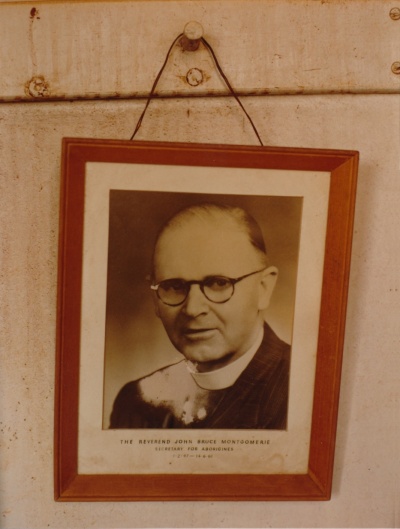
‘I was employed by the community. They are the sponsoring body, the Aboriginal elders of the communities. At the interview for the job I asked what work they wanted to do, what enterprises they wanted to have. They said they wanted to get the old ways going again. They remembered Fred Gray’s gardens. They told me to go away and look into what they could grow. I chose heliconias for their cultural compatibility.’
Heliconias are large waxy flowers that originally came from Hawaii. SkillShare is a federally funded program of community-inspired and community-managed employment and training activities. Self-determination has replaced assimilation and the mission buildings have been registered by the National Trust as representative of a time that has now passed.
‘They are not attractive to the community. This is why I chose them. You couldn’t grow watermelons because they would all be taken. Heliconias have a long vase life, so you can get them out on the plane. They sell for thirty dollars a stem down south. Also, the plants will last, so if everybody goes off to a ceremony it won’t matter. With pumpkins or mangoes, you’d be fighting the culture.’
The Umbakumba people in the Heliconia project—some days nobody turns up and some days a few people—are all doing a Certificate in Horticultural Skills (Aboriginal Communities) at Northern Territory University. In the words of one trainer, this course uses a tick-and-flick approach. ‘Can describe the shape and arrangement of leaves’, the tick-a-box form in the competency module reads. Describing the shape and arrangement of leaves is an observable competency, and once observed, the trainer ticks and flicks.
The trainer’s manual for the Certificate in Horticultural Skills (Aboriginal Communities) puts the cultural differences in general terms. It uses five cells to describe a history of two centuries’ worth of differing.
As a trainer in an Aboriginal community, the following diagram which summarises some aspects of European and Aboriginal styles of learning may be helpful to you:
|
EUROPEAN SOCIETY
|
ABORIGINAL SOCIETY
|
A decade or two ago, there were perhaps sixty Aboriginal workers in GEMCO, not just in rehab but in real jobs driving trucks and working in the concentrator. By last year, the number had gone down to seven. The problem at least in part is the language demands of competency. People might be able to do the job, but the culture of the written word in the competency-based training and the competency-based assessment keeps them out.
This is why we are there, to work out paths to access and thus to self-determination, to work out how people might get the literacy skills they need to get jobs. Where the workforce is not English speaking or reading or writing, or insufficiently so, language and literacy skills development is an important feature of competency training. With hint of irony, we say they need white written words for self-determination.
In the Bark Hut, the SkillShare team has installed a bank of computers as part of the adult literacy program, designed to develop work-related competencies. They are mostly used for playing games, and the SkillShare people consider this to be a good start. It is a first step towards competency and self-determination. The most popular and useful game of all is one called ‘Lemmings’.
‘Aboriginal people are present-oriented and unable to plan. They are people of the concrete here and now; they do not think abstractly or about the future. The main thing you need to look at is not literacy, but what work means. Leanne comes in and says she is interested in a job. So I say, well if you want this job, come in and talk to me about it tomorrow morning at 9.00 a.m.—just to see if she has any idea about time and white man’s work. The “Lemmings” game on the computer is ideal in beginning literacy. It teaches people to think forward. “If you do this … then that.” “What if you did this instead, then what… ?”‘
*
When I was a child my mother got me to include the black children in my prayers—a broad group. The children of the Arnhem Land missions merged into a longer list which included missionary outposts in Tanganyika and Kenya. My prayers traced ethnic English lines of brotherly love and imperial self-interest. The African missionaries of my mother’s generation, the ones she used to get me to pray for, have all come back to Australia now and retired. She still prays for Julie Waddy who’s been on Groote, at Angurugu, for eighteen years now. The mission no longer enforces the word of God with lock and key.
‘People have demanded that the Bible be produced bilingually. There are enough people who can see the point of reading in their own language now. They want to keep the culture strong; it’s a statement of identity when the culture is under threat.’ This seems to be a substantial change of heart since the time when Dick Harris was at Angurugu. The minister is now an Aboriginal man. The community is self-governing. Julie Waddy’s role is an ancillary one, as a linguist and a Bible translator.
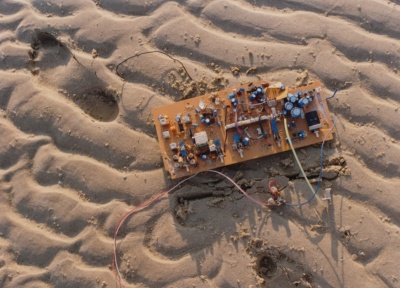
‘There are five noun classes for non-human things, eighteen personal pronoun prefixes, including distinctions such as between first-person inclusive and first-person exclusive.’ The CMS representatives have to know all this now because the word has to be brought now in a very different way, a new technology of the word, in a new culture of remembering.
‘They want to keep the culture strong; it’s a statement of identity when the culture is under threat.’ Things seem to have changed. Dick Harris could never have said that, yet his was ostensibly the same God as Julie Waddy’s, relying on the same word. Just what does it mean to ‘keep the culture strong’?
*
In the schools at Angurugu and Umbakumba, there’s culturally sensitive education, two-way education, both-ways education. The old Dick and Jane readers have been thrown out, and now it’s all ‘relevant’ reading and ‘empowering’ writing.
‘The Aboriginal Schools Curriculum Materials Project … is a Commonwealth-funded project to improve Aboriginal access to, participation in and outcomes from education. Language, subject matter and methodology used in the materials are relevant and appropriate to the needs of teachers and students.’
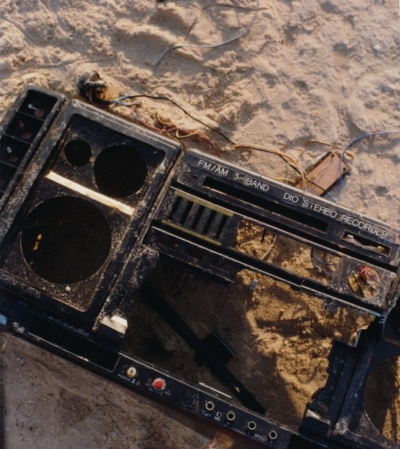
Black children are being empowered through culturally sensitive education which is delivered to them through the ‘genre’ approach to the teaching of reading and writing. All writing, all types of writing, this approach explains, are either one or another type of ‘genre’. Genre is a ‘staged, goal-oriented social process’, the teachers’ notes tell us.
Narrative genre is one very important genre, and it is, like other genres, ‘staged’. That is, it needs a number of parts, a structure, (to achieve its purpose; the fact that, like all genres, it has a purpose, is what makes it goal-oriented. Its purpose is ‘to entertain’ and ‘to help people think about the meaning of life and experiences in life’. Narrative, the literature says, opens the door to the world of literature. Its structure, its generic stages are: ‘orientation; complication; crisis; resolution’.
These are authoritative words from the white science of language. Cultural sensitivity is delivered by employing local stories—’relevant’ narrative. But first, for the teacher/trainer’s sake, the stories have to be structured into their generic stages, so that they can be taught usefully.
An East Arnhem story—one used in culturally sensitive education—is ‘staged’ thus:
Orientation: ‘Long, long ago, a giant serpent called Inganarr lived in Arnhem Land. He ate people wherever he went. He moved from west to east, eating people as he went.’
Complication: ‘Inganarr went to North Goulburn Island and are all the people there. He returned to the mainland and rested. Two boys, out hunting, were surprised when their spears came back to them when they threw them in a certain direction. When they moved closer to the area they saw Inganarr. They raced back to tell their father. All the tribe took their hunting weapons and ran to kill Inganarr. They couldn’t. Instead, the people were swallowed by Inganarr.’
Crisis: ‘Inganarr slowly made his way to eastern Arnhem Land. He had eaten too many people. He felt sick. Suddenly, he opened his mouth and threw up.’
Resolution: ‘Out came all the people, still holding their hunting weapons. They settled down in eastern Arnhem Land and never returned to the west. And that is why, to this day, there are no people living on North Goulburn Island, and there are more people in eastern Arnhem Land than in the west.’
‘Myths,’ say the same materials, ‘tell of relationships between gods, spirits or supernatural powers and humans and nature, for example, creation stories’.
Would Dick Harris have called the creation stories he told a myth? Is the creation story about the depositing of the ore some 95 million years ago in the GEMCO publicity material a myth? Was the purpose entertainment, or mere edification, or was it an entree into the world of literature?
Doing myths seems to be a matter of remembering culture, a matter of recognition. Doing local Aboriginal myths at school seems to be a matter of making the school a genuinely community thing. So, the school—because its mission today cultural sensitivity—teaches the stuff of 95 million years ago as fact. The indigenous is turned into stories.
This is how culture is being brought into schooling. The purpose of story—all textual purpose—is simplified entirely within the terms of a society where social processes are staged in simple and linear ways, and goal-oriented with a relatively limited focus. Rather than bringing culture into schools, it is forced through the cultural filter of school literature. This is a way of reinventing culture, of transforming it fundamentally.
The 95 million years referred to in GEMCO’s literature end will a large hole in the ground and BHP making a lot of money. This is fact. It is also staged and goal-oriented social process. Anything else is ancillary to this fact, this goal, including self-determination and the pragmatics of the new Aboriginal employment objectives.
It looks like Aboriginal culture is now being done in the school and self-determination is being done in the mine. In reality, new technologies of forgetting are in place, and perhaps they are more effective than before. Whites are again firmly—more firmly—in control of the culture of the word, the written word.
The Inganarr myth is narrative genre. The narrative, Little Red Riding Hood, the materials tell us, works the same way—orientation, complication, crisis, resolution—entertaining, helping people think about the meaning of life, opening doors into the world of literature. This is the cultural orientation of the English written word, and things Aboriginal are being reconstructed a variation on Little Red Riding Hood.
*
The Bible translation continues. But not without the vowel wars—ten years during which two white linguists fought over whether then were just two vowels or six vowels in Anindilyakwa. Until that conflict was resolved, bilingual teaching was very near impossible. Culture through language in school had to wait. One of the linguists has now retreated and the six vowel version has prevailed.
‘People have demanded that the Bible be produced bilingually. This is why the Bible is in both languages, translated back into English at about third grade level. The translation back in English avoids passives, the clause order is different from regular English Bibles, implicit information is made explicit, the negative is posited before the positive and the use of abstract nouns is avoided—these are the principles of all Aboriginal languages.’
This is the business of being culturally appropriate, of making the Bible simpler.

This is the business of completely transforming Anindilyakwa by writing it down, of making it simple after the style of the culture of writing.
Now that the vowel stuff has been resolved, the old Dick and Jane readers have been replaced by Anindilyakwa readers. The kids sit up straight, doing genre-narrative, a staged, goal-oriented social process—doing school.
‘The language is strong here because there is only one language, and it is an island.’
This is a linguist’s convenience, convenient for translators and the writers of dictionaries who fix words and meanings into straight lines in fixed order. The truth is that there are nineteen clans on Groote. Nineteen clans means nineteen languages. One clan means multiple languages of age, of gender, of moiety.
Doing culture and language appear to be ways of meeting Paul Keating’s injunction when he was Prime Minister, to recognise the ‘oldest culture in the world’, after the shame of genocide and protection and assimilation. Culture and language, however, turn out to be white man’s inventions, another way of forgetting, although this time it’s a smarter, more surreptitious, more effective, more devastating technology of forgetting. It is forgetting by refraining the remembering.
Once the epistemological scaffolds have been set in place—the reconstruction of Anindilyakwa as a written language; forcing texts from another life into the genre of myth-narrative; the charade of competency as self-determination—once this cultural frame has been internalised, then the scaffolds can be allowed to fall away and it appears that the culture has been preserved and that the people are determining the course of their own lives. Keeping up the appearances of remembering, a new culture of forgetting is set in place.
This is how liberal sensitivity to difference becomes a white lie.
*
Now, whites officially regret the genocide which happened across the Australian continent. They officially regret the policy of protection that at least replaced genocidal fervour and isolated Aboriginal peoples in reserves as a mark of regret about the genocide. Whites now officially regret the policy of assimilation that at least replaced the policy of protection, and that attempted to give Aboriginal peoples a ‘fair go’ as a mark of regret about the protection. Self-determination includes regret about assimilation, for wanting to wipe out their culture and replace it with ours. Respect for other people’s cultures is now the name of the game.
From their music and art and dance we are beginning to recognise how much richer our national life and identity will be for the participation of Aboriginals and Torres Strait Islanders … Imagine if our spiritual life was ridiculed and denied … All over Australia, Aboriginal and Torres Strait Islanders are taking control over their lives … Imagine if ours was the oldest culture in the world and we were told it was worthless … The Mabo judgment constituted recognition of an historic truth … The cultural shift is occurring … the vision of indigenous self-determination and self-management …
These were Keating’s historic words, and a sign of a new politics of remembering, a politics of culture and self-determination.
Groote Eylandt is a place of historic truth, a place of self-determination and a place where the past can be freely remembered. There are no longer restrictions on ‘their music and art and dance’, the representatives of the ‘oldest culture’ can hold their heads high.
But the ‘historic truth of Mabo is old hat here, old hat because the land is already all Aboriginal owned and the Church Missionary Society did their job of making sure that the indigenous people would receive mining royalties. The future’s already arrived on Groote.
*
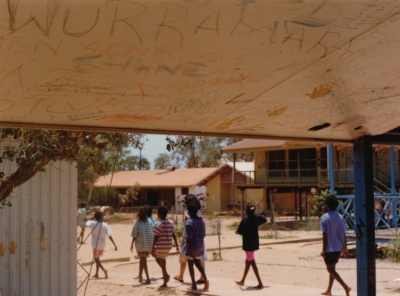
‘I am here, on Groote, as a consultant employed by SkillShare. SkillShare is run by the elders. They tell me what to do. But a lot of the time, I tell them what to do. They just trust me, and I do the work. If they didn’t trust me, they’d let me do it anyway.’
Every July, at ‘clan time’, the ‘clan money’—the mining royalties—is distributed among the nineteen clans. Depending on whether GEMCO has had a good year, it might be $3 million, or it might be $5 million.
‘We trainers shut down for two weeks at clan time,’ says one of the SkillShare people. ‘The miners call it Black Christmas. We all go off to Bali for a couple of weeks. There are gunshots in the streets. Boys race round on the back two wheels of new motor bikes until the petrol and the money runs out. There are big card games. The white miners who live in Alyangula put junk furniture out in the street and ask exorbitant prices for it. The car dealers come out from Darwin with photo albums of second-hand cars which they bring out on a barge once they’ve been purchased. These people have $80 000 to $90 000 family incomes and it’s all spent in a week. For the rest of the year they’re on the dole. The dole money is called sit-down money. There’s still a hunting and gathering attitude here. They gather the money on dole day as if it was mangoes or yams. These people are very traditional. These guys are still hunters and gatherers and the dole money and the clan money is a part of the gathering. The money holds back their moving towards western culture. It keeps them living in the here and now, it keeps the hunting and gathering going.’
Here is a new mission for whites, a mission that needs this sort of cross-cultural understanding.
‘We’re stoked, we love it here. We love mucking around in other people’s cultures.’
*
The white principal at Angurugu school is taking early retirement. This has been the worst year of her career. A fourteen year old boy had been sniffing petrol in the school grounds for weeks on end, sleeping there by night. She took the petrol can and rang the police. The cops took him away and returned him to his mother. There was not much else they could do. Next day, the mother came back to the school and demanded the can of petrol back. He died in the school grounds a couple of days later.
When in Groote, even community visitors like us usually stay in miners’ accommodation at Alyangula, about ten kilometres from the airport and Angurugu. Each day we drive to Angurugu to do our community business, crossing the boundary between the world of the whites and the world of the blacks.
By tonnage, this is Australia’s busiest road, an almost straight stretch of bitumen from a hole in the ground beside an Aboriginal community to a white community by a beach and a shipping wharf from which the manganese is dispatched to the world of industrial modernity. The distance is paced by exactly one hundred high-tension power poles, each with a number painted near the base. It’s hard not to count out the distance each day, from one to one hundred, in a world of numbered rationality.
Groote has the highest rate of crime per capita in the world, another fact in the universe of numbers. The police won’t even go to Umbakumba, nor will the ambulance, it’s too dangerous, Random gunshots ring out through the night. The ambulance people say that if you can’t get yourself in to Alyangula, you’re not going to survive anyway.
*
Christian revivalism sweeps Arnhem Land in waves. One of these waves had recently been through Maningrida, just as Groote is had been swept by a wave a few years back.
The day after a big revival meeting, a large white cross still stands in the open field in the middle of the community. The field is empty now, but yesterday it was filled with expectation of the last days and the coming of the Lord and the fruits of repentance.
Everyone seems to be on edge. A meeting under the huge raintree follows through on some of the arguments of the previous day. Questions of meaning and purpose cannot be raised then just left to another Sunday; and they cannot be said without there being reverberations as wide as the renegotiation of history going on right now.
A woman speaks into a loudspeaker, weaving in and out of English and Kriol and language:
'Dreaming not culture.
'Drinking not culture.
'Fighting not culture.
'It’s not God’s way.'
Culture, this woman seems to be saying, is an antidote to the life of dreaming, drinking and fighting.
‘Cross-hatching’, she proclaims, ‘is the work of Satan!’
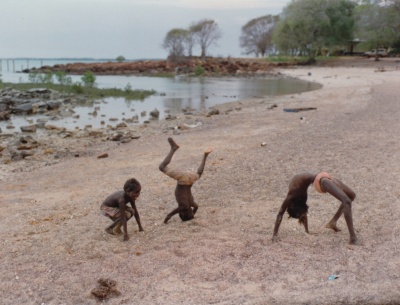
‘The Dreaming is evil.’ Again, this is what white missionaries used to say. The things she is saying are things that whites cannot say any more. A new white framing of culture means that even the white missionaries who are left at least have to keep up the appearance of respecting the difference that ‘culture’ seems to make visible. The woman is not using ‘culture’ here the way whites now do.
‘Culture is the work of the devil!’
The woman’s next sentence reverses the semantics of ‘culture’, as she has been using the word. Culture is now tradition, including the dreaming and cross-hatching, but in this meaning it is something to be left behind just as it is hoped drinking and fighting can be left behind. But who invented this idea of culture? Culture slips into this part of her argument as an English word, a word that the whites have brought of late and which this Aboriginal woman is now directly repudiating, The semantic shift works perfectly.
We meet with Milak Winunguj, Council President at Maningrida. An older man is in the room talking with him. The discussion about culture over the loudspeaker is still going on in the distance. The older man is accusing people of selling out, including the Aboriginal members of the council, including Milak. It seems that the preacher has been sentenced to death, and Milak and the old man are talking about that.
‘Balanda not true. Culture is true. You’re halfway between culture and Balanda,’ the old man accuses Milak.
Balanda is the Yolngu (Northeast Arnhem) word for whites, from the word ‘Hollander’. The Yolngu knew the Dutch had found their way to Batavia long before any whites knew the Yolngu existed. They had been told by the Macassans and some Yolngu travelling to Macassar may have seen whites. Yolngu discovered the whites long before the whites discovered the Yolngu. They had a word for the whites before the whites had a word for any of the indigenous inhabitants of Australia. This is significant for white history in which there virtue is ascribed to ‘discovery’.
Milak rages and threatens to throw us out of his office when we ask the old man what he means. We are questioning community. This stuff is community business, not white man’s business.
‘Traditional culture is a key to education. Balanda education is very, very hard, but our education is just as hard, just as good. Our kind of thinking is in two worlds. We need to use Yolngu tactics in introducing things in the curriculum, learning about the core of the place that you belong to, the territorial boundaries, where you come from. I know that very, very well, that’s where my education comes from. The species, the contours, short or long beaches, type of trees that we recognise very well, that’s where our education comes from. Seasonal changes that fit in with our song cycle, that’s where our education comes from. Learning at campfires, sitting around, that’s a key to education. Observing each other’s conversation, learning from it, footprints on the beach, recognising whose they are, this is part of communication. Yolngu tactics are important, a key to education. We want to use Balanda tactics, too, but white teachers are just coming here for the money. We’re coming home, but they could go anywhere.’
The argument about cultures and tactics is one that whites can never carry on as cogently as this because the world of the whites has reached ends—work competencies, schooled learning, the authority of the written word—that are much less negotiable, far less open to possibility.
Milak’s rage at us is proper. Whites have no right to intervene in indigenous arguments. But we can argue with our own arguments about indigenous arguments.
*
‘European society: Expected to learn by themselves. Aboriginal society: Learn from older wiser people.’ Learning by ourselves, personal responsibility for personal development—these are classical white myths.
‘Myths tell of relationships between gods, spirits or supernatural powers and humans and nature, e.g. creation stories’. Our personal selves figure heroically in educational stories of self-creation. This is self-delusion. The truth of the culture of writing is otherwise.
I won’t believe until I have read it. (Martial, 103 AD)
Human beings around the world hold true to a wide variety of beliefs, some mainstream, some unusual and some bizarre. Whether you want to know about the world’s great religions, the thoughts of famous philosophers, or what makes politicians tick, there are books and journals that will tell you all that you need to know.
These are the words of a poster on the wall of a classroom, a call to self-creation through literacy.
There are books and journals that will tell you what you need to know.’
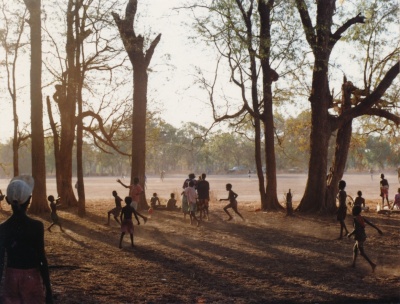
‘European society: Learn by being told. Aboriginal society: Learn by doing.’ The abstract word stands opposed to the culture of the-concrete here and now. Where does this leave the staged, goal oriented doings of competency frameworks? Where does it leave the tellings of Aboriginal elders? These little cross-cultural keys seem handy ways of sorting the world out, but they never work as neatly as they assume.
‘European society: Learn in made-up situations. Aboriginal society: Learn in real-life activities.’ This must mean that Inganarr is real-life activity and competency training is all made up.
‘European society: Learn for future. Aboriginal society: Learn for today’s activity.’ It seems from the activities of white educators that this is a crucial difference. The future is abstract, the present concrete, so the European is future oriented, the Aborigine oriented to experience in the present.
‘European society: Society in constant change. Aboriginal society: Traditionally stable society.’ The sung words of Anindilyakwa and other Australian indigenous languages told of almost everything except a concrete present. They told of the immanence of distant pasts and of imminent futures, in people, in objects, in symbols. These were languages of abstraction, of metaphor, of overlaid references so complex that learning their meanings required dedicated lifetimes. A word was a person, a place, a god in a cosmological narrative, an object in the natural world, a clan.
Songs were sung, and resung, but never twice the same way. They were points of negotiation, of living with constant change by constantly making change, of renaming the world, of always throwing sovereignty into question by reopening the discussion about words and people and places.
The white schemas of cultural difference could be as wrong as this, or more. Difference and sensitivity are nicer than the way things used to be done—a kinder, gentler racism.
*
The white principal had drawn up a timetable on the whiteboard in the school staffroom. ‘Constant change is here to stay,’ was written across the top of the board, yet all the cells in the grid were still white blanks—alike in their dimensions and still empty even though it was several weeks into term.
The world referred to in Anindilyakwa was not a fixed world. As a person died and his or her name could no longer be mentioned, the whole world had to be renamed. As a person progressed through life, the world was renamed in progressively more complex languages of age. Women named their world in ways different from men. Clans named their lands and other people’s lands in dialects of affected differentiation.
Everything was always up for renegotiation, for reappropriation through renaming, for singing again, for telling again, for creating the world anew by remembering and refashioning its sung and spoken words. This was not a stable, unchanging society; it was one of continual recreation, of people remaking their history all the time.
‘Constant change is here to stay.’ But the words of English, the language of ostensible change, are fixed in dictionaries, signifier representing signified, in a probably more static and non-negotiable relationship than any other language, ever. English has been standardised, which means that there is a right and wrong spelling and grammar, tick and flick. The logic of Anindilyakwa was one of differentiation instead, of marking land ownership and identity and gender and moiety and age by the different ways in which you could name the world. Depending on who you are and how you experience it differently.
This was the way the language worked, before dictionaries and language revival, that is. When Anindilyakwa is put into lists of straight lines in a dictionary, all meaning is frozen in the same way that writing English is based on frozen referents. It can be taught in schools. It can be read in Bibles.
The world of white words is a world of replicated time and space, a world where creation can be reduced to numbers—95 million units of homogeneity. It is an additive world where we can claim as a virtue that English has 150 000 words, more than any other language, even though most of them are practically useless to us almost all the time.
But the grammar, the pronouns, the relating of ourselves in the world—you can count English pronouns on not much more than one hand, versus the hundreds in Anindilyakwa. There are just a few English tenses compared to the manifold complexity of Anindilyakwa pasts in relation to presents in relation to futures.
We whites live in the world of the concrete, the predictable and the repetitive. This is the culture of the written word.
As you spend time on the vast continent of Aboriginal Australia, you realise that an anthropology of the whites is the thing that is needed. Whites bring the words of culture and language, they use them as a way of seeing what they understand to be differences, but what do these words mean? When might we have an Aboriginal linguistics of white naming instead of a white linguistics of Aboriginal naming?
So we can understand ourselves and what we are doing.
*
‘We want to learn the roots of the Balanda way,’ says an Aboriginal teacher-education student, ‘the way they teach, the secret lessons.’
The problem is that the whites themselves often don’t know what they are doing and probably won’t until there are Aboriginal anthropologies of the whites. They don’t seem to know what English really is, what dictionaries really do, what kinds of faith underpin competencies and what kinds of secular modernity underpin Bible translations. The whites use their secrets but they do not know what they themselves are, so they can’t say what their secrets are.
‘We should do assignments on western knowledge. We want real life. We want to know about both ways. Now the content is Yolngu, method is Balanda; we want to swap this around. Now we are like the children of Israel, slaves, whites making us do things about our own communities, forcing us to do this and that.’
I am writing all this down as field notes, so we can piece together an ethnography of literacy and so we can consider the questions of cultural relevance (sensitivity) and competence (self-determination). I am writing it down because if I don’t, I’ll forget.
I am a slave to the culture of writing, a culture in which we have lost the ability to remember even a few sentences, let alone the hundreds of hours of songs fading through perhaps six or ten languages as they travel across the land and its history.
*
Stephen Brown is the Aboriginal Employment Officer with GEMCO. In the last year he has managed to get the number of Aboriginal employees up to twenty-three.
‘We don’t want to be on the dole. Every time I drive up into Angurugu, I can’t drive through that town without someone asking me for a job. We don’t need more training either, we need jobs. Blackfellas are the most trained people I have ever seen. Forty thousand years of dreams and 200 years of fucking nightmares, that’s what I say. I wanted pre-employment programs run through SkillShare. I say, this is what we need you to run. They say, no, this is what you need. They run it their way and think that blackfellas don’t know what is good for them. The heliconias, noxious fucking weeds, they don’t belong to here. We’re planting natives in the rehab program. The computer games—they must think we’re fucking stupid.’
*
Out at Noonkanbah in the Kimberley, Dickie Cox tells what he doesn’t like about the land rights legislation that has followed the High Court’s Mabo decision. He had been one of the leaders of the land rights struggle of the seventies and eighties.
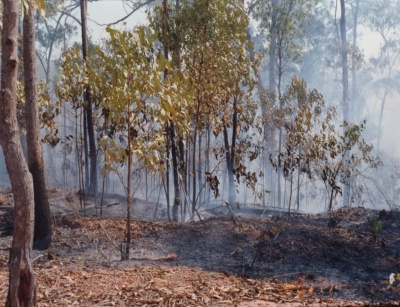
Mabo expunges liberal consciences by reinventing tradition, by forcing the communities that were created in white missions and white cattle stations, to reinvent themselves in terms of liberal notions of culture, within a white framework of supposed remembering. This is creating well-paid jobs for anthropologists and linguists, not a few of whom are former missionaries, to provide expert assistance in remembering whose land was originally whose.
On Groote, it may mean that only two of the nineteen clans, the ones on whose lands the mine was built, will get all of the royalty money, and people fear the terrible consequences that would follow if this happened.
*
'Orait, longtaim bifo enijing bin jidan, en det Wed bin jidan, en det Wed bin jidan garram God, en det Wed na im God.'
This is the first verse of the Gospel According to John in the Kriol Bible.
'In the beginning was the Word, and the word was with God, and the word was God.'
Kriol is a completely new Australian language. Lance and Gwen Tremblett are Anglican Bible literacy teachers. Now they live at Ngukurr, the old Roper River Mission, and help in the ongoing task of translating the Bible into Kriol. In the last days of the mission Lance had been town clerk at Angurugu.
‘You might hear people say that language is alive but you try and ask any child to speak one of them and they can’t. There’s a handful of speakers of each of the eight languages represented here at Ngukurr. They’re trying to write the languages down but they only come up with word lists: animals, birds and the like. They haven’t got a lot of the words that they need, they have already disappeared. Kriol is becoming a language of Aboriginal identity. That’s what our Aboriginal Preacher, Michael Gumbuli says. He’s from Groote and speaks five languages. He says that all the old languages will be gone in a decade or so. He’s a realist.’
Soon we may have lost the resources we would need to be able to do an anthropology of the whites and a linguistics of their written words.
There has been a funeral at Ngukurr, and ceremony has been going on for several days now, moving uneasily between Christian hymns, a sermon from Michael Gumbuli on the evil of grog, and the clapsticks and didgeridoos of a culture the Trembletts believe is disappearing.
